40 label the parts of leaf
Parts of a Cactus | eHow The tissue consists of thin-walled storage cells made up of gummy substances. You can also see environmental adaptations for a cactus inside its root system. The roots may be tuberous, fleshy and thick or fibrous, made from connective tissue. Small and shallow, these are covered in corklike layers to retain moisture. NCERT & CBSE For Class 6 Science Parts of a plant Chapter 7 Parts of a plant A typical plant has different parts in its body viz, Roots, stem, leaves, flowers and fruits. The part which is present under ground is known as roots. Parts that are present above the ground are stem, leaves, buds, flowers, fruits and seeds. Root The roots are mostly seen underground and brown in color.
Leaf: Structure, Function, Modifications, Morphology - Embibe Leaf is the lateral outgrowth of the stem that arises at the nodes of the stem. They are green in colour due to the presence of chlorophyll pigments and help in photosynthesis. Leaves are sites for transpiration, gaseous exchange, guttation, etc. Lamina, petiole and leaf base are the three main parts of the leaf.
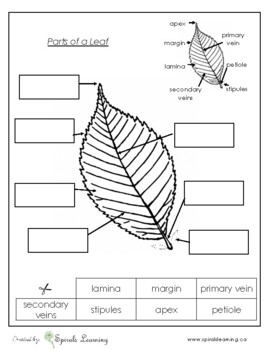
Label the parts of leaf
Monocot And Dicot Root Cross Section - EcoBioHub Conjunctive Tissue. It is a mass of parenchyma cells lying in between the xylem and phloem bundles. 6. Pith. It occupies the central portion of the root and consists of parenchymatous cells. Unlike dicot roots, it is well-developed in monocot roots. 7. Vascular Bundles. The vascular tissue in monocot roots is polyarch. Root, Stem and Leaf - Getting to know Plants - Class Notes (1) A leaf consists mainly of two parts lamina and petiole. Lamina is commonly as leaf blade and petiole is commonly known as leaf stalk. The broad green part of the leaf is called lamina. The thin stalk with which leaf is attached to the stem is called "petiole". (2) There is a mid-rib or main vein in the centre of lamina. Cell Leaf Microscope Under Labeled See if you can spot the structures seen in the Play-Doh model Filipino Housekeeper Usa Questions: 1 Label some atoms In the box below, draw a picture of this leaf cross section and label the parts listed above In one cell, label all the parts you see In one cell, label all the parts you see. Hypothesis: Students should tell what organelles or ...
Label the parts of leaf. Label parts of a leaf worksheet | TutorsOnSpot Label parts of a leaf worksheet. 27/01/2022 Client: muhammad11 Deadline: 2 Day. label parts of a leaf worksheet. label parts of a leaf worksheet. Homework is Completed By: Writer Writer Name Amount Client Comments & Rating; ONLINE. Instant Homework Helper. 4.8. 4305 Orders Completed. $16: Internal Structure of Leaf: Parts, Function, Diagram - Embibe The anatomy or internal structure of dicot leaves can be understood on the basis of the following structures: 1. Upper Epidermis 2. Mesophyll a. Palisade Tissue b. Spongy Tissue 3. Vascular Tissue 4. Midrib 5. Lower Epidermis Upper Epidermis 1. The upper epidermis is made up of a single layer of parenchymatous cells. 2. Twig Anatomy for Tree Identification - Treehugger The opposites are maple, ash, dogwood, paulownia buckeye and boxelder (which is really a maple). The alternates are oak, hickory, yellow poplar, birch, beech, elm, cherry, sweetgum, and sycamore.... What Are the Parts of a Banana Plant? - Hunker The leaf unfurls over seven to 20 days, depending on conditions, and is the primary way a banana photosynthesizes. Leaves can grow to 9 feet long and 4 feet wide, depending on the cultivar. The leaf is comprised of a midrib and a blade (the midrib is the midseam that separates the two leaf blades) supported by a sheath.
Fall Leaf Fun for Kids: Leaf Crafts, Leaf Activities, Leaf Books, and More! Parts of a leaf. Labeling the parts of a leaf is a simple way to add in some learning with your kids while out exploring nature. You can get formal and tape the leaf to a piece of paper and have your child label it, or you can simply do it verbally while you explore. Have your kids identify the stem, veins, lobes, base, and any serration. ... 10 Best Paper Printable Leaf Patterns - printablee.com Three main leaf patterns are normally distinguished by botanists: alternate, opposite, and whorled. Leaves of all plants have characteristic lines on their surface, though they are very different. That's what everyone who has ever had a closer look at a leaf knows. These characteristic patterns are components of the plant vascular system. How to Make Leaf Rubbing Art and Leaf Art Printable Step-by-step How to make a leaf rubbing Lay out a piece of plastic wrap about the same size as your paper with the sticky side facing up. Place the leaves on the plastic and gently press into place. Place a piece of paper on top of the leaves. Gently rub the crayon on to the paper, creating an impression of the leaf below. Alternate Leaf Arrangement on the Stem Leaves are arranged in two vertical rows on opposite sides of the stem alternating every 180 degrees. Distichous leaf or botanical element (flowers, seeds) arrangements are a form of alternate leaf arrangement. Distichous leaf arrangements examples: Maize (Zea mays) Gladiolus ( Gladiolus palustris) Giant Reed (Arundo donax) Article Sources
Angiosperm leaf architecture - Digital Atlas of Ancient Life The left and center leaves (G and H) are not cleared, the right leaf (I) has been cleared and stained. A strap used to secure herbarium specimens can also be seen on the left leaf. All three leaves have three primary veins and acrodromous venation (explained below). Left and center: Leaves of Sarcomphalus saeri (US 2045934, US 3554997). Western Herb Products, Inc. - 615439 - 12/07/2021 | FDA The label indicated that Artemisia absinthium is derived from the leaf part of the plant, however, the specification sheet indicated that the botanical ingredient is derived from the aerial parts ... 37 Printable Leaf Templates, Outlines & Shapes (Free) 37 free leaf template printables in various shapes and sizes such as maple leaves, oak leaves, fall leaves, star-shaped, and heart shaped leaf If you're looking for cut out leaves you have come to the right place. We have an amazing collection of leaf outline printables for every age and every need. Parts of a Plant and Their Functions (With Diagram) - Trees.com For photosynthesis to take place, the leaves make use of sunlight, carbon dioxide, water, and chlorophyll. Most leaves tend to be green, thanks to the presence of chlorophyll. However, variegated leaves with white patches on can be found in many species of plants, and these patches appear pale due to the absence of chlorophyll.
The Parts of a Seed and Their Functions in Seed and Plant Development The embryo can be distinguished from the other major parts of the seed based on component parts and function. It consists of the epicotyl, hypocotyl, radicle, and one or two cotyledons. It is the one that develops into a plant with an upward growing shoot and a downward growing root system. The epicotyl is a tiny shoot from which the entire ...
Parts of a Leaf: Lesson for Kids - Study.com These include the axil, petiole, blade, midrib and vein. While there are other parts that you might find in more advanced sciences classes, these are the main parts of all leaves. Different parts...
Structure of Leaves: The Epidermis, Palisade and Spongy Layers The Cuticle and Upper Epidermis The outermost layer of a leaf is called the cuticle Just like our skin helps protect us, leaves have an outer layer that protects them. This outermost layer is...
Parts of a Flower and Their Functions (With Diagram) | Trees.com The four main parts of a flower are the petals, sepals, stamen, and carpel (sometimes known as a pistil). If a flower has all four of these key parts, it is considered to be a complete flower. If any one of these elements is missing, it is an incomplete flower. Complete Rose Hibiscus Tulip Incomplete Holly Corn Squash Grasses Perfect vs. Imperfect
Identify a Tree by Leaf Shape, Margin, and Venation Identify the Outer Leaf Layer All tree leaves have an outer layer called the epidermis, which can also be used in the identification process. This leaf "skin" always has a waxy cover called the...
Parts Of A Pumpkin Worksheets (FUN Free Printable) - Planes & Balloons They will learn to label the outer parts of a pumpkin such as skin, ribs, stem, vine, and leaf. As well as inner parts - the seeds, pulp, and strands. On top of that, they will practice drawing a pumpkin and even writing a short story! label parts of a pumpkin worksheet You will find seven printable worksheets in this set.
Why Are My Hosta Leaves Turning Yellow? 9 Causes and Solutions 7. Petiole Rot. The disease formerly known as stem and crown rot causes the leaves to start turning yellow at the margins before extending through the rest of the leaf. As the disease progresses, you'll see rot and fungal threads at the base of the plant. Eventually, the entire base of the plant will rot and collapse.
Parts And Function Of Leaf - ProProfs Quiz 1. Makes energy transformation possible in the leave. A. Chloroplast B. Chlorophyll C. Photosynthesis D. Stomata 2. Where the petiole of the leaf attaches to the stem A. Axil B. Blade C. Tip D. Stipule 3. The broad expanded region of the leaf A. Axil B. Blade C. Vein D. Mesophyll 4. Is the terminal point of the leaf. A. Axil B. Petiole C. Vein D.
Leaf Structure And Its Functions/ Photosynthesis - ProProfs 1. Which organelle of the leaf reflects back excess light? A. Stomata B. Guard cells C. Waxy cuticle 2. which layer of the leaf has the most chlorophyll? A. Palisade mesophyll B. Spongy mesophyll C. Epidermis 3. what does the phloem transport through the leaf and on to the rest of the plant? A. Food energy B. Water and minerals C. Chloroplast 4.
Specimen Preparation Guide - University of Florida Herbarium (FLAS) A portion of a large single leaf should be cut and mounted with both sides showing, and best of all, a large leaf should be mounted only with cotton mounting tape. IMPORTANT: If flowers and fruits are obscured by other plant parts such as leaves try to manipulate the specimen so that those parts show. Also, spread out, bend and fold plant parts ...
Labeled Microscope Leaf Under Cell Leaf Cell Under Microscope Labeled Jimmy Fallon Video Label an de diagram of a stomatal apparatus 2 four parts on the diagram Amoebas breed asexually by dividing one cell in two After hundreds of years of observation, the cell theory was developed Examine the prepared slide of a cross section through a leaf under the compound microscope Examine ...
Cell Leaf Microscope Under Labeled See if you can spot the structures seen in the Play-Doh model Filipino Housekeeper Usa Questions: 1 Label some atoms In the box below, draw a picture of this leaf cross section and label the parts listed above In one cell, label all the parts you see In one cell, label all the parts you see. Hypothesis: Students should tell what organelles or ...
Root, Stem and Leaf - Getting to know Plants - Class Notes (1) A leaf consists mainly of two parts lamina and petiole. Lamina is commonly as leaf blade and petiole is commonly known as leaf stalk. The broad green part of the leaf is called lamina. The thin stalk with which leaf is attached to the stem is called "petiole". (2) There is a mid-rib or main vein in the centre of lamina.
Monocot And Dicot Root Cross Section - EcoBioHub Conjunctive Tissue. It is a mass of parenchyma cells lying in between the xylem and phloem bundles. 6. Pith. It occupies the central portion of the root and consists of parenchymatous cells. Unlike dicot roots, it is well-developed in monocot roots. 7. Vascular Bundles. The vascular tissue in monocot roots is polyarch.
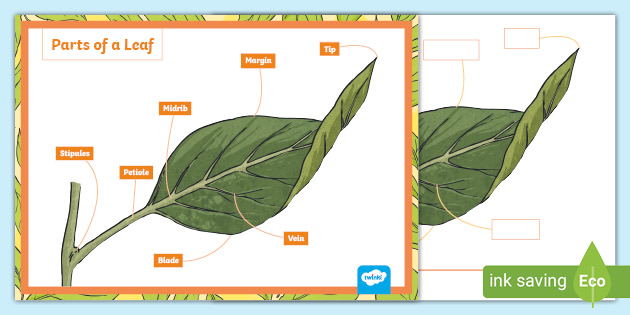

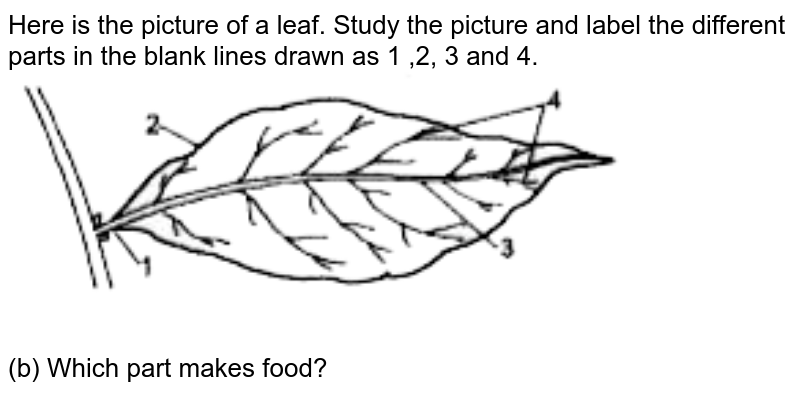



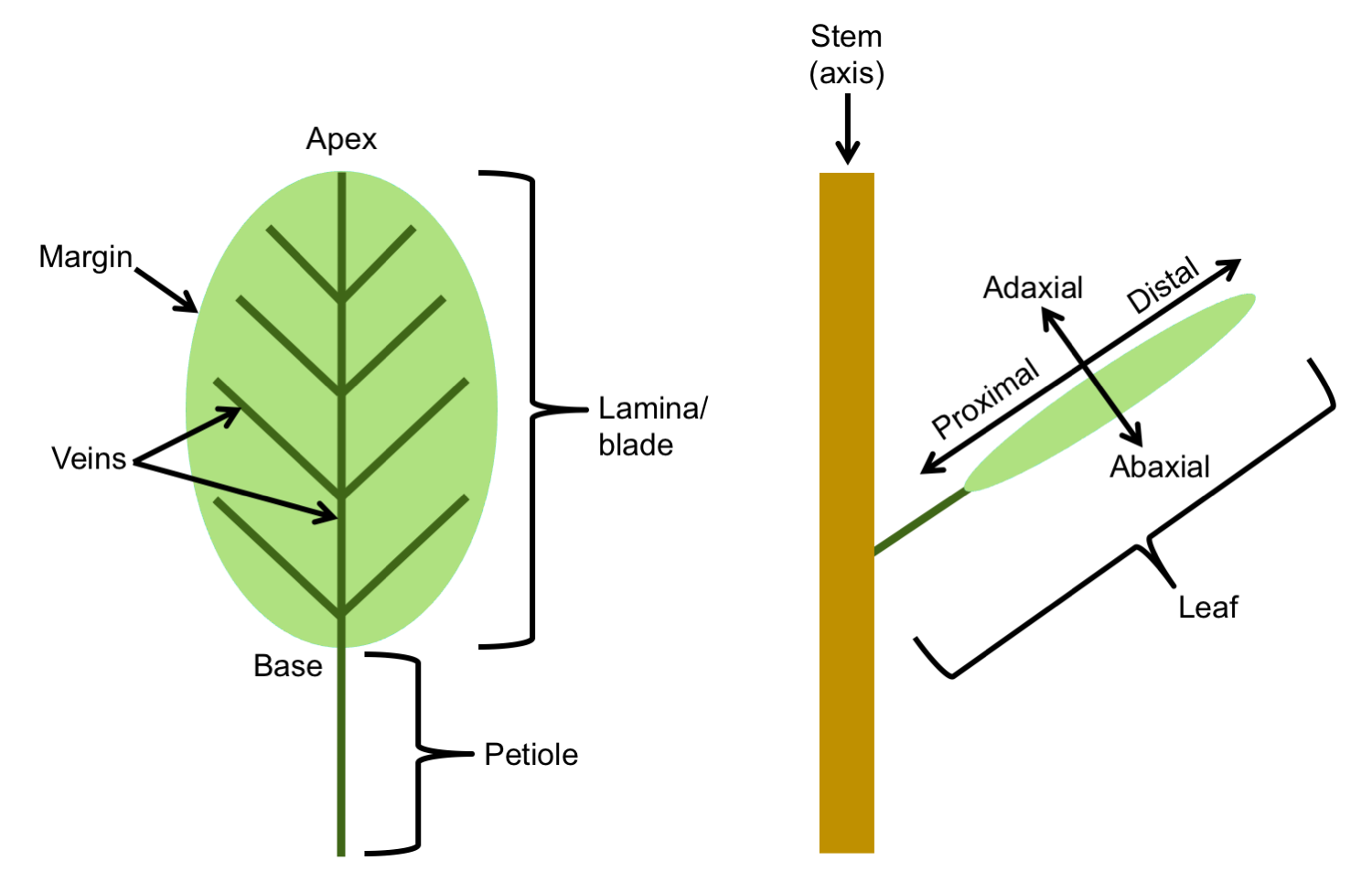
![PDF] The Optimized Shape Of A Leaf Petiole | Semantic Scholar](https://d3i71xaburhd42.cloudfront.net/2fd919736c7cdcb77670db70707361fb89ef70bb/3-Figure1-1.png)





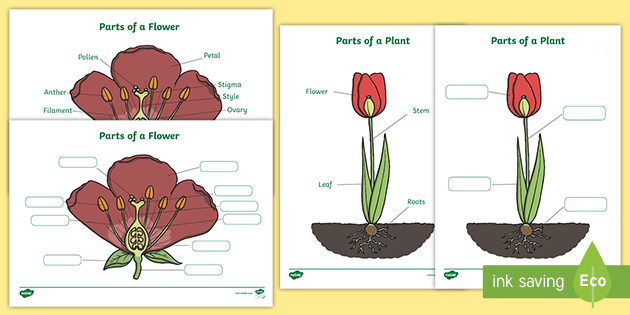






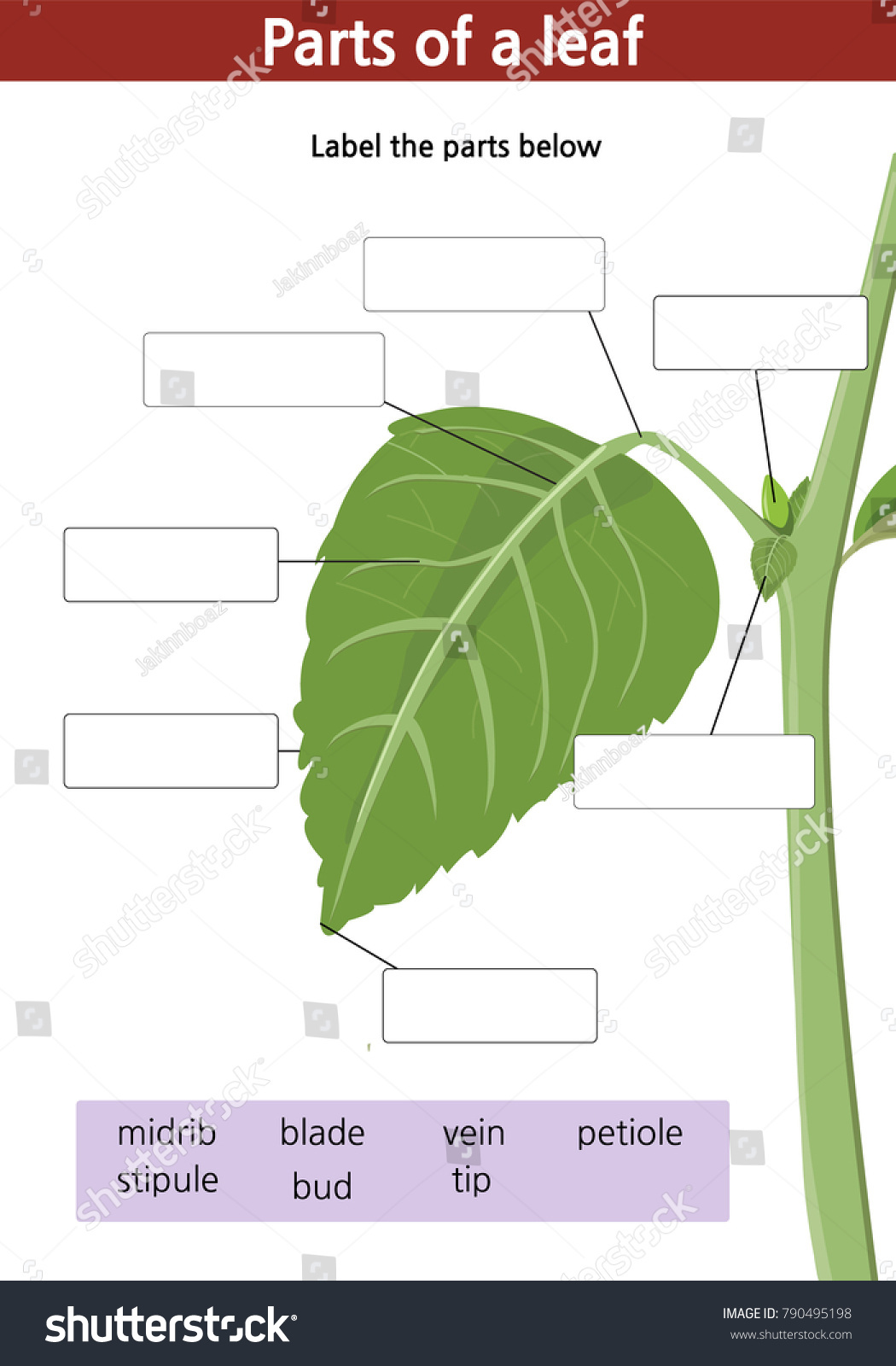





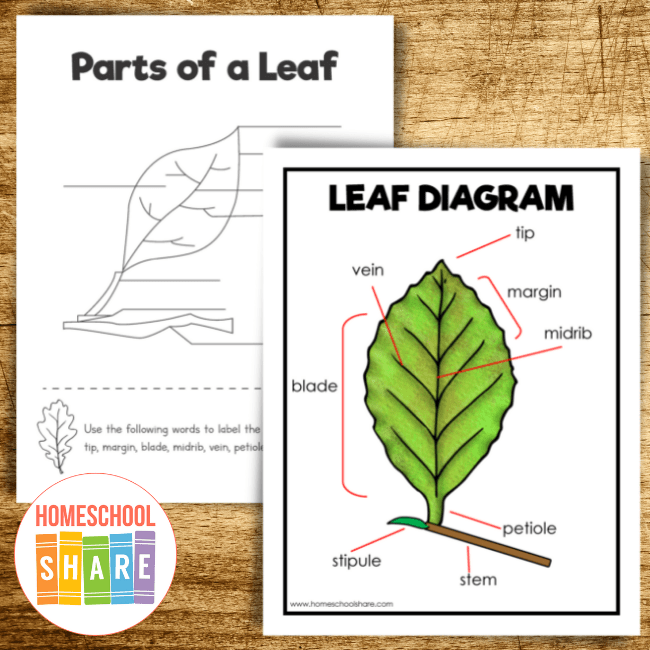
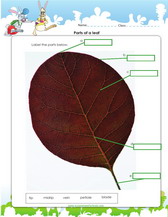




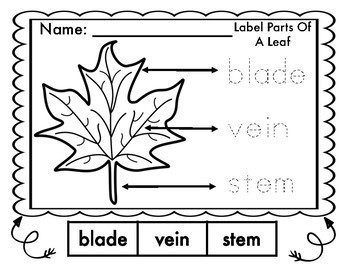

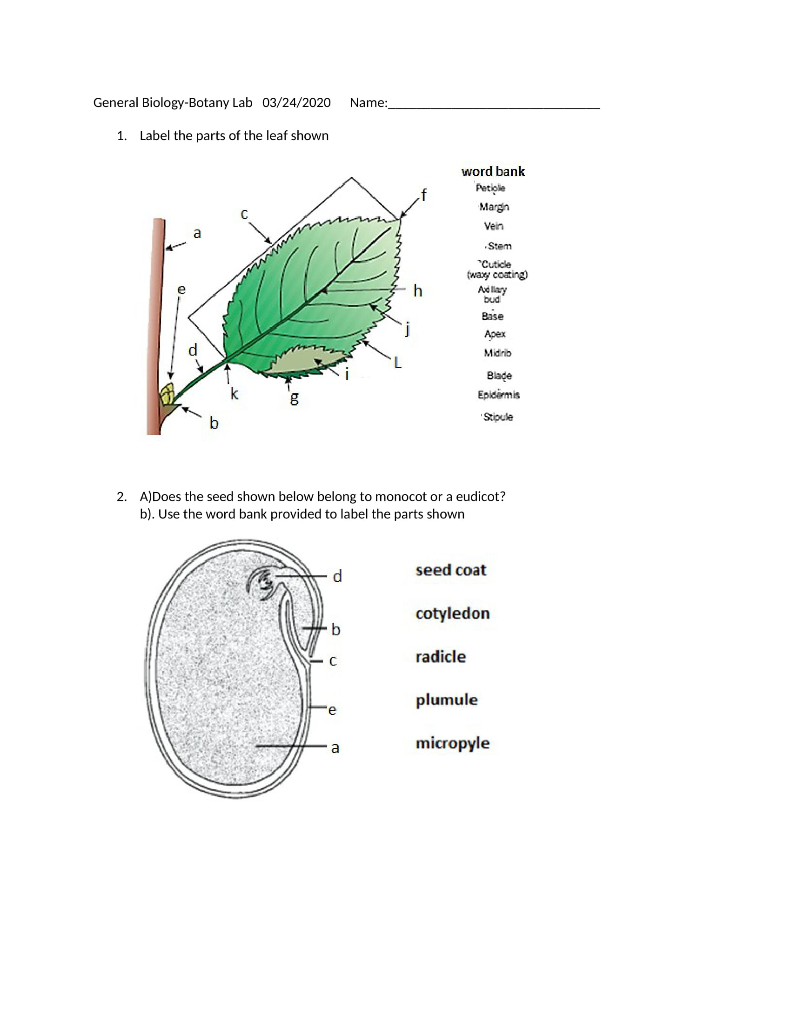


Post a Comment for "40 label the parts of leaf"